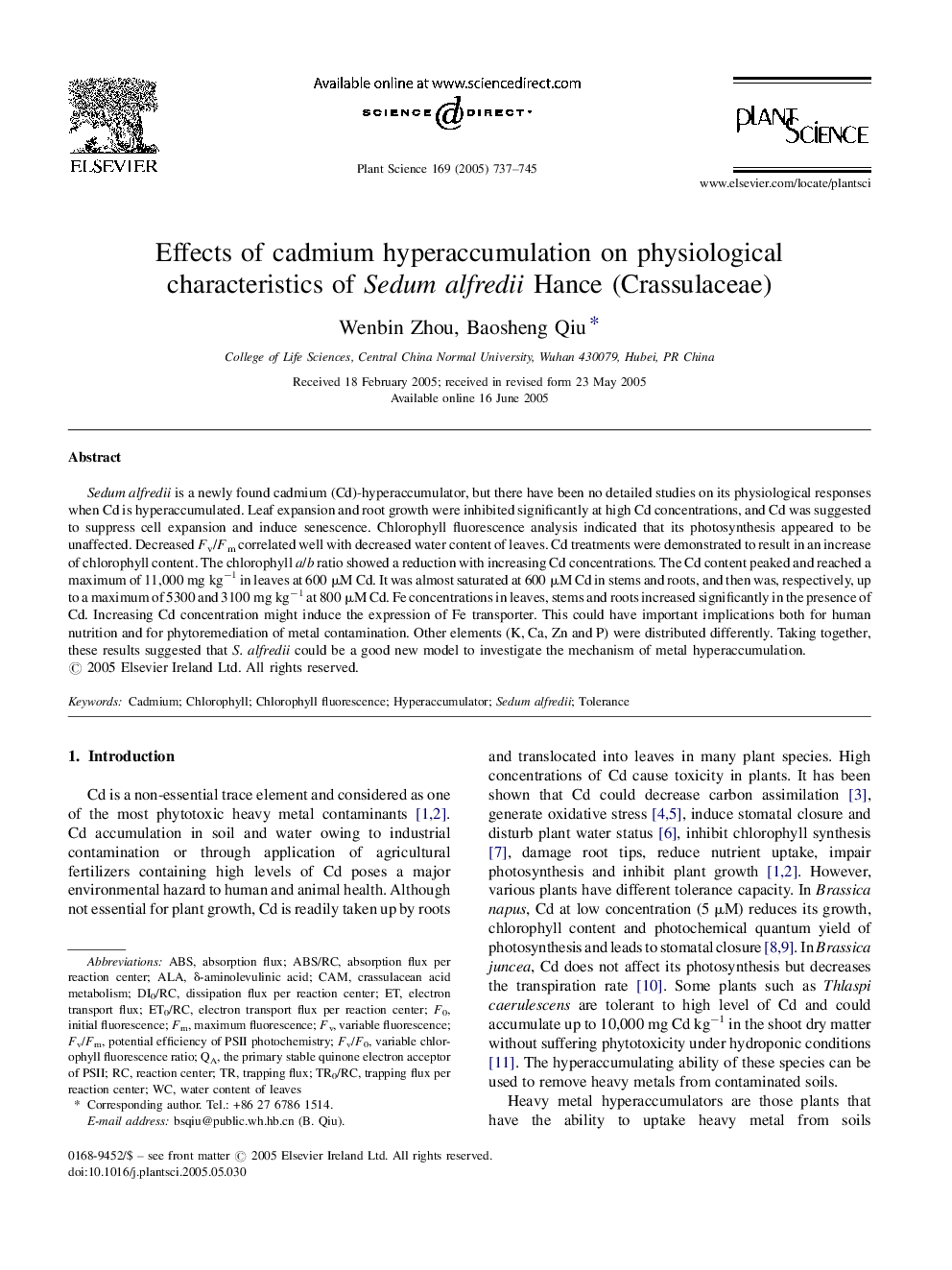| Article ID | Journal | Published Year | Pages | File Type |
|---|---|---|---|---|
| 10841839 | Plant Science | 2005 | 9 Pages |
Abstract
Sedum alfredii is a newly found cadmium (Cd)-hyperaccumulator, but there have been no detailed studies on its physiological responses when Cd is hyperaccumulated. Leaf expansion and root growth were inhibited significantly at high Cd concentrations, and Cd was suggested to suppress cell expansion and induce senescence. Chlorophyll fluorescence analysis indicated that its photosynthesis appeared to be unaffected. Decreased Fv/Fm correlated well with decreased water content of leaves. Cd treatments were demonstrated to result in an increase of chlorophyll content. The chlorophyll a/b ratio showed a reduction with increasing Cd concentrations. The Cd content peaked and reached a maximum of 11,000 mg kgâ1 in leaves at 600 μM Cd. It was almost saturated at 600 μM Cd in stems and roots, and then was, respectively, up to a maximum of 5300 and 3100 mg kgâ1 at 800 μM Cd. Fe concentrations in leaves, stems and roots increased significantly in the presence of Cd. Increasing Cd concentration might induce the expression of Fe transporter. This could have important implications both for human nutrition and for phytoremediation of metal contamination. Other elements (K, Ca, Zn and P) were distributed differently. Taking together, these results suggested that S. alfredii could be a good new model to investigate the mechanism of metal hyperaccumulation.
Keywords
Related Topics
Life Sciences
Agricultural and Biological Sciences
Plant Science
Authors
Wenbin Zhou, Baosheng Qiu,
